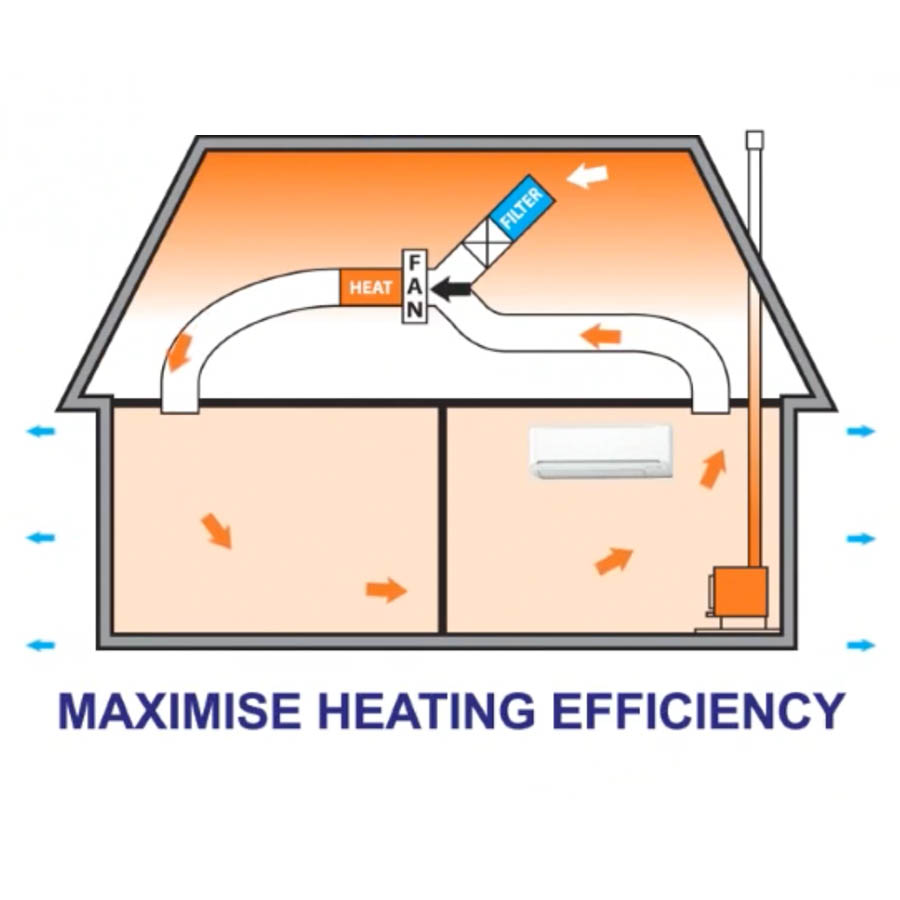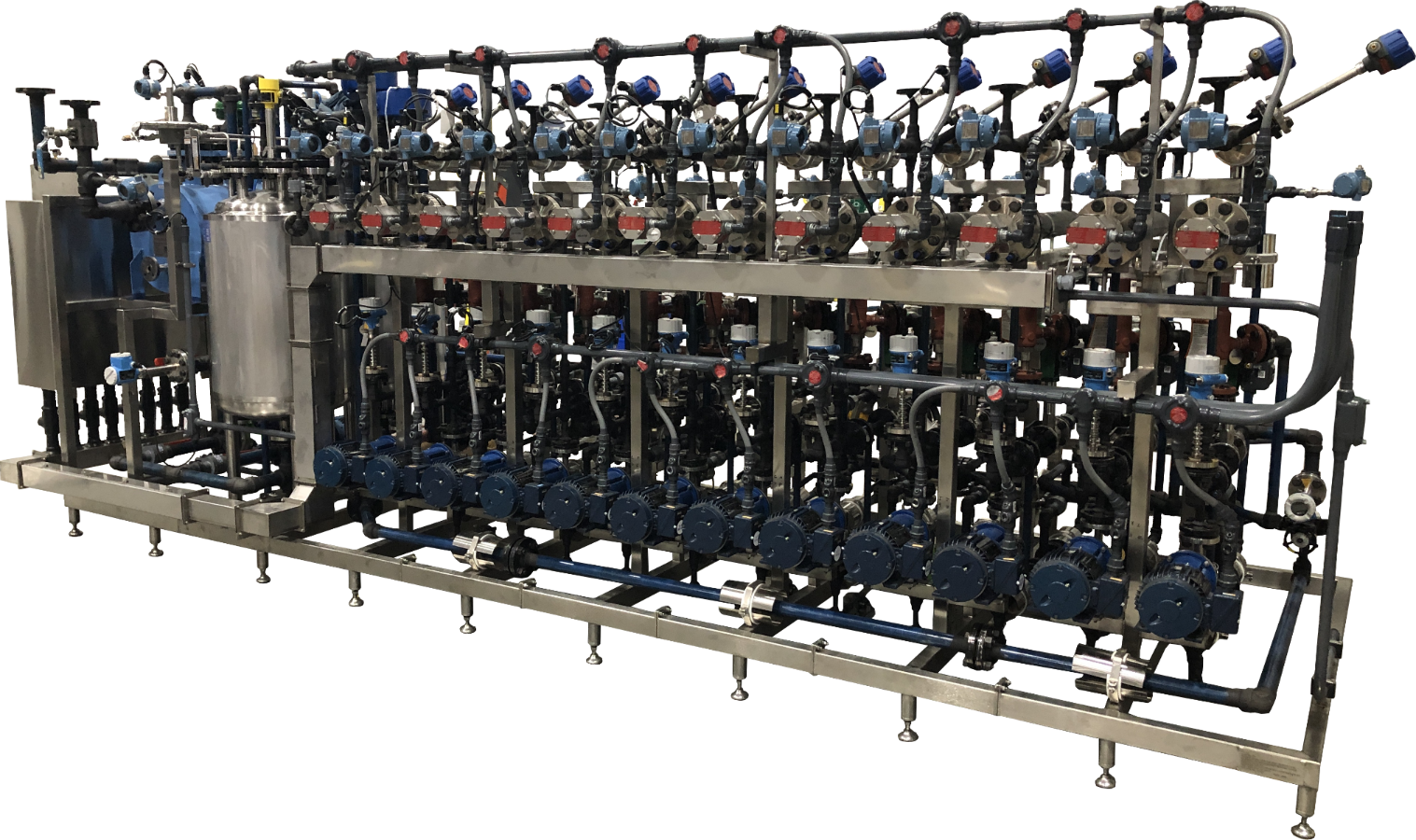What Makes DVS Heat Transfer Systems Ideal for Aerospace Thermal Solutions?
Advancements in Heat Transfer Solutions: What You Need to Know for Ideal Performance
Advancements in Heat transfer systems are transforming performance throughout different industries. Advanced materials like graphene and nanofluids promise significant enhancements in thermal conductivity. The assimilation of IoT and device understanding provides possibilities for real-time surveillance and boosted energy effectiveness. Nonetheless, the landscape of thermal monitoring is rapidly progressing (DVS Heat Transfer Systems). Understanding these growths is essential for attaining ideal system performance and sustainability in the future. What particular improvements are forming this transformation?
Arising Materials for Boosted Heat Transfer

Advanced Heat Exchanger Layouts
While standard Heat exchangers have served their function in different applications, advanced styles are now arising to satisfy the boosting needs for performance and efficiency. These cutting-edge layouts, such as plate, shell-and-tube, and finned-tube Heat exchangers, integrate enhanced surface locations and boosted circulation patterns to boost thermal transfer prices. Additionally, small designs enable reduced area requirements without jeopardizing efficiency. Advanced materials, such as composites and corrosion-resistant alloys, in addition boost longevity and performance under severe problems. Simulation technologies and computational fluid dynamics are significantly employed to refine these styles, guaranteeing peak Heat transfer qualities. As industries look for to reduce power intake and take full advantage of output, the adoption of sophisticated Heat exchanger layouts is pivotal in attaining these objectives.
The Role of Nanotechnology in Heat Transfer
Nanotechnology plays a crucial function in enhancing thermal conductivity within Heat transfer systems. By controling products at the nanoscale, researchers have actually accomplished substantial enhancements in power efficiency. These developments not only enhance efficiency yet additionally add to even more lasting power remedies.
Enhanced Thermal Conductivity
Substantial advancements in thermal conductivity have actually arised through the application of nanotechnology, transforming Heat transfer systems throughout numerous sectors. By including nanoparticles right into Heat transfer fluids and materials, researchers have achieved amazing rises in thermal conductivity. These nanoparticles, such as carbon nanotubes, graphene, and metal oxides, enhance the Heat transfer buildings because of their high surface area and special thermal attributes. The resulting composites show enhanced efficiency in applications varying from electronics cooling systems to renewable power innovations. Furthermore, the ability to tailor the size, shape, and make-up of nanoparticles permits maximized thermal administration options. Therefore, nanotechnology remains to play a crucial role in the advancement of much more efficient and effective Heat transfer systems, paving the means for boosted industrial applications.
Energy Performance Improvements

Integration of IoT in Heat Transfer Solutions
The integration of IoT in Heat transfer systems introduces the application of wise sensors that boost functional performance. These sensors enable real-time information surveillance, enabling prompt changes and optimizations. This technical improvement has the potential to significantly enhance efficiency and power monitoring in Heat transfer applications.
Smart Sensors Execution
As Heat transfer systems develop, the combination of clever sensors through the Net of Points (IoT) has actually arised as a transformative technique. These sensing units make it possible for real-time tracking of temperature level, pressure, and flow rates, boosting system effectiveness and dependability. By collecting and sending data, they facilitate positive maintenance, minimizing the risk of system failings. In addition, smart sensors add to energy savings by refining operational specifications based on environmental problems. Their ability to evaluate patterns and abnormalities permits educated decision-making, making certain More Help peak efficiency of Heat transfer systems. As markets increasingly adopt this innovation, the application of wise sensors stands to transform exactly how Heat transfer systems are taken care of, paving the means for higher sustainability and enhanced efficiency results.
Real-Time Information Surveillance
How can real-time information keeping an eye on enhance the performance of Heat transfer systems? By incorporating Web of Things (IoT) technology, Heat transfer systems can leverage continual data collection from smart sensors. This real-time monitoring permits instant evaluation of temperature, pressure, and circulation prices, allowing drivers to recognize inefficiencies promptly. As a result, changes can be made to enhance performance, reduce energy intake, and expand tools life-span. In addition, anticipating maintenance can be executed, lessening unforeseen downtime and expensive repair work. The ability to visualize efficiency metrics through control panels improves decision-making, fostering a proactive strategy to system administration. Eventually, real-time data checking not just improves functional effectiveness however also adds to sustainability objectives within commercial processes.
Power Efficiency and Sustainability Trends
Power efficiency and sustainability patterns are reshaping the landscape of Heat transfer systems, driving innovation and compliance across various sectors. Organizations are increasingly focusing on energy-efficient styles to reduce operational expenses and decrease environmental impacts. The integration of renewable power sources is ending up being extra common, making it possible for Heat transfer systems to run sustainably while satisfying regulative demands. Furthermore, developments in products and innovations promote reduced power usage and boost general efficiency. Lifecycle assessments are additionally getting traction, enabling firms to evaluate the ecological impact of Heat transfer systems from production to disposal. This concentrate on sustainability not only supports business obligation however additionally positions organizations competitively in a market where consumers progressively favor environment-friendly solutions. Power performance and sustainability continue to be important factors to consider for future developments in Heat transfer technology.
Technologies in Thermal Administration Solutions
While the need for effective Heat transfer remains to increase, advancements in thermal administration options are arising to deal with both performance and sustainability challenges. Advanced products, such as stage change products and nanofluids, are being created to improve Heat transfer effectiveness - DVS Heat Transfer Systems. These products enhance thermal conductivity and allow for far better temperature policy in various applications. In addition, innovations like energetic thermal control systems are acquiring traction, making it possible for real-time modifications to handle Heat circulation properly. These systems contribute to energy financial savings and decrease the ecological influence of thermal procedures. The combination of IoT in thermal management promotes monitoring and predictive upkeep, making certain enhanced performance and long life of Heat transfer systems. In general, these innovations represent considerable strides toward even more lasting thermal monitoring practices
Future Directions in Heat Transfer Modern Technology
Emerging innovations in thermal monitoring services indicate an encouraging future for Heat transfer technology. Scientists are significantly focusing on creating materials with premium thermal conductivity and enhanced energy effectiveness. Technologies such as nanofluids, which contain suspended nanoparticles, provide substantial enhancements in Heat transfer performance. Furthermore, the assimilation of smart materials that adjust to differing temperature problems is gaining grip, permitting more responsive and effective systems. The surge of additive manufacturing techniques is likewise allowing the layout of complex Heat exchanger geometries that maximize fluid circulation. In addition, the implementation of artificial intelligence algorithms is anticipated to transform the optimization of Heat transfer systems, facilitating predictive maintenance and performance improvement. Collectively, these innovations are poised to transform the landscape of Heat transfer modern technologies in numerous industries.

Regularly Asked Questions

How Do I Select the Right Heat Transfer System for My Application?
Choosing the ideal Heat transfer system involves evaluating application requirements, including temperature arrays, liquid homes, and performance needs. Examining system kinds, maintenance considerations, and cost-effectiveness additionally plays a vital duty in making an informed decision.
What Are the Maintenance Demands for Advanced Heat Exchangers?
Upkeep demands for sophisticated Heat exchangers typically include normal assessments, keeping an eye on for leaks, cleansing of surface areas, and guaranteeing ideal circulation prices. Sticking to supplier standards warranties efficient operation and extends the devices's life expectancy.
Just How Do Ecological Aspects Impact Heat Transfer Efficiency?
Ecological factors considerably influence Heat transfer effectiveness. Variations in air flow, humidity, and temperature level impact thermal conductivity and convective Heat transfer, inevitably affecting system efficiency and requiring consideration throughout the layout and operation of Heat transfer systems.
What Safety And Security Criteria Relate To Heat Transfer Equipments?
Safety and security standards for Heat transfer systems generally include standards from organizations such as ASME and ASTM. DVS Heat Transfer Systems. These criteria address products, style, and functional practices to ensure integrity, effectiveness, and protection versus threats in various applications
Exactly How Can I Fix Usual Heat Transfer System Issues?
Troubleshooting common Heat transfer system concerns involves looking for leakages, making certain correct fluid flow, examining insulation honesty, and confirming temperature differentials. Identifying these aspects can assist special info maintain system effectiveness and prevent more complications.
Nanotechnology plays an essential role in enhancing thermal conductivity within Heat transfer systems. Significant improvements in thermal conductivity have actually arised via the application of other nanotechnology, reinventing Heat transfer systems across various sectors. Innovations in thermal conductivity via nanotechnology have paved the means for remarkable enhancements in power efficiency within Heat transfer systems. Power effectiveness and sustainability fads are improving the landscape of Heat transfer systems, driving technology and compliance throughout various industries. The assimilation of IoT in thermal monitoring assists in tracking and predictive maintenance, making certain maximized efficiency and long life of Heat transfer systems.